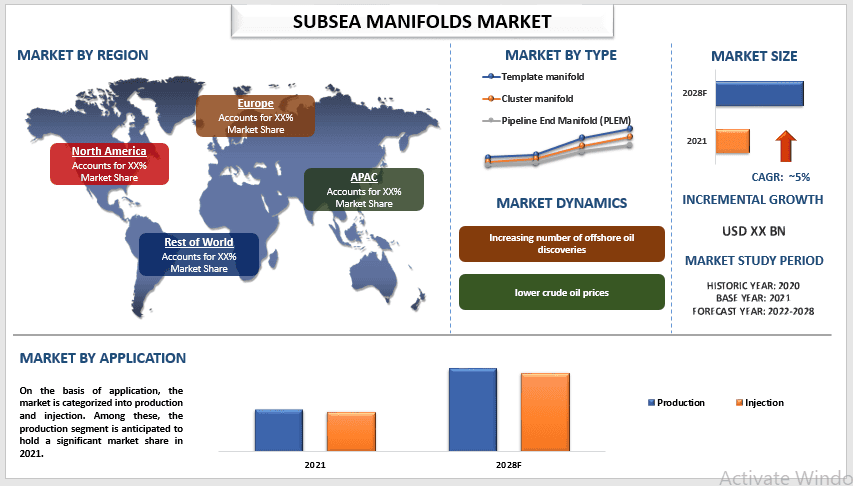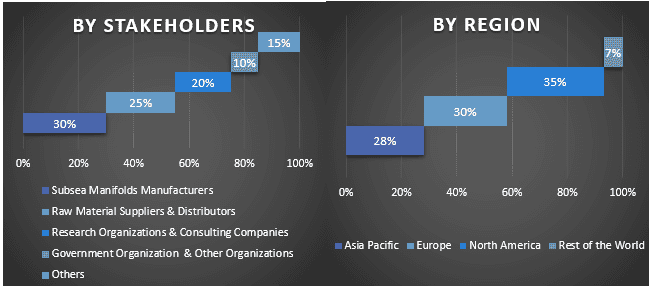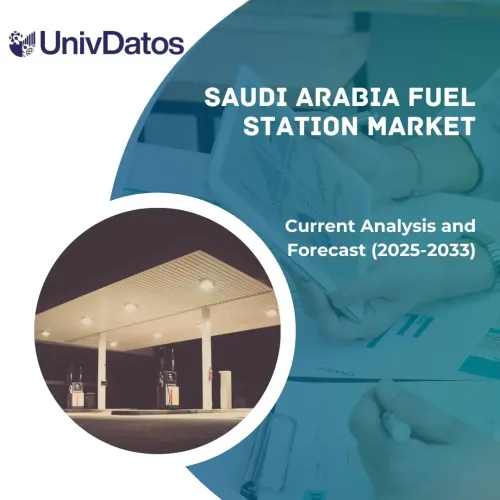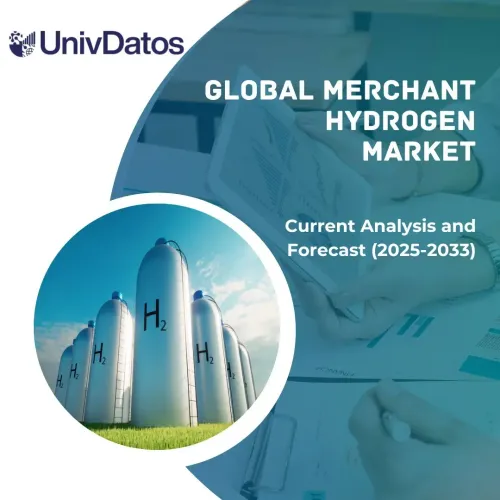- Startseite
- Über uns
- Industrie
- Dienstleistungen
- Lesen
- Kontaktieren Sie uns
Markt für Untersee-Verteiler: Aktuelle Analyse und Prognose (2022-2028)
Schwerpunkt auf Typ (Template-Verteiler, Cluster-Verteiler und Pipeline-Endverteiler (PLEM)); Anwendung (Förderung und Injektion); und Region/Land

Es wird erwartet, dass der globale Markt für Subsea Manifolds im Prognosezeitraum mit einer beträchtlichen Rate von etwa 5 % wachsen wird. Subsea Manifolds sind eine Anordnung von Rohrleitungen und/oder Ventilen, die dazu dienen, Fluidströme zu kombinieren, zu verteilen, zu steuern und oft zu überwachen. Darüber hinaus werden Subsea Manifolds auf dem Meeresboden innerhalb einer Reihe von Bohrlöchern installiert, um Produktionsfluide zu sammeln oder Wasser oder Gas in Bohrlöcher zu injizieren. Sie werden bei der Erschließung von Öl- und Gasfeldern eingesetzt, um das Unterwassersystem zu vereinfachen, den Einsatz von Unterwasserpipelines und -risern zu minimieren und den Fluss von Produktionsfluiden innerhalb des Systems zu optimieren. Darüber hinaus werden Manifolds auf dem Meeresboden innerhalb einer Reihe von Bohrlöchern installiert, um Produkte zu sammeln oder Wasser oder Gas in die Bohrlöcher einzuleiten. Das Unterwasserproduktionssystem besteht aus einem kompletten Unterwasserbohrloch, einem Weihnachtsbaum, einer Versorgungsleitung, einem Riser, einem Jumper, einer Flowline, einer Unterwasserstruktur und einem Unterwassersteuerungssystem. Darüber hinaus verbessert diese gesamte Ausrüstung nicht nur die Leistung des Ölfelds, sondern senkt auch die Produktionskosten. Daher müssen Tauchverteiler in tieferen Gewässern effizient arbeiten.
ABB Ltd, Aker Solutions ASA, Baker Hughes, Dril-Quip Inc., Halliburton Company, OneSubsea, Schlumberger Limited, Subsea 7 S.A., TechnipFMC plc, Trendsetter Engineering sind einige der Hauptakteure auf dem Markt. Mehrere Fusionen und Übernahmen sowie Partnerschaften wurden von diesen Akteuren eingegangen, um Kunden mit Hightech- und innovativen Produkten/Technologien zu unterstützen.
Im Bericht dargestellte Einblicke
„Unter den Typen wird die Kategorie der Cluster-Manifolds im Prognosezeitraum ein robustes CAGR erleben“
Basierend auf dem Typ ist der Markt in Template-Manifold, Cluster-Manifold und Pipeline-End-Manifold (PLEM) unterteilt. Die Kategorie der Cluster-Manifolds wird im Prognosezeitraum eine höhere CAGR aufweisen, da sie Template-Manifolds überlegen ist, da sie Flexibilität für die Trennung von Bohrlöchern bietet, chemische Injektionen beinhalten kann, im Gegensatz zu den typischen Manifolds, und die Wiederverwendung von Explorationsbohrlöchern ermöglicht. Darüber hinaus bietet es Flexibilität, um alle Bohrlöcher zu vermischen oder zu trennen, und kann die Molchbarkeit aufnehmen. Darüber hinaus hat es das Risiko von herunterfallenden Objekten und SimOps im Vergleich zum Template-Manifold reduziert.
„Unter den Anwendungen wird die Produktion im Jahr 2020 einen bedeutenden Anteil am Markt halten“
Auf der Grundlage der Anwendung wird der Markt in Produktion und Injektion unterteilt. Unter diesen wird die Produktion im Jahr 2021 einen bedeutenden Anteil am Markt halten. Dies ist hauptsächlich auf viele E&P-Unternehmen für Bohrlochtests, Probenahme, Zuweisungsmanagement und Isolierung zurückzuführen. In den kommenden Jahren mit dem technologischen Fortschritt bewegen sich viele Unternehmen in Richtung Tiefseeproduktion, um eine beträchtliche Menge an Kohlenwasserstoffen zu erhalten. Darüber hinaus dienen Subsea-Manifold-Anwendungen dazu, Ströme von Multiwell-Templates zu kombinieren, Ströme zu Produktionsflussleitungen zu übertragen und die Verteilung von injiziertem Wasser, Gasen und Chemikalien zu verwalten.
„Nordamerika wird einen bedeutenden Anteil am Markt halten“
Im Jahr 2020 wird erwartet, dass Nordamerika im Prognosezeitraum mit einer beträchtlichen CAGR wachsen wird. Dies ist hauptsächlich auf die Verbesserung der Offshore-Produktion mit großen Investitionen in die Tiefseeproduktion im Golf von Mexiko zurückzuführen, was voraussichtlich die Nachfrage nach Subsea Manifolds erhöhen wird. Darüber hinaus werden günstige staatliche Regeln und Vorschriften sowie erhöhte Investitionen in die Offshore-Exploration und -Produktion voraussichtlich das Wachstum des nordamerikanischen Marktes für Subsea-Verteilermanifolds beschleunigen. Es wird erwartet, dass der Subsea-Manifold-Markt in Lateinamerika schnell wachsen wird, wo Argentinien, Chile, Brasilien und andere stark in die Offshore-Exploration und -Produktion investieren. Darüber hinaus ist der Rückgang der Erdölimporte auf die verstärkte horizontale Offshore-Bohrung in der Region zurückzuführen. Laut der Energy Information Administration (EIA) importierten die USA beispielsweise etwa 8,47 Millionen Barrel pro Tag (b/d) Erdöl aus 73 Ländern.
Gründe für den Kauf dieses Berichts:
- Die Studie umfasst Marktgrößen- und Prognoseanalysen, die von authentifizierten wichtigen Branchenexperten validiert wurden.
- Der Bericht bietet einen schnellen Überblick über die Gesamtleistung der Branche auf einen Blick.
- Der Bericht behandelt eine eingehende Analyse prominenter Branchenkollegen mit einem primären Fokus auf wichtige Geschäftszahlen, Produktportfolios, Expansionsstrategien und aktuelle Entwicklungen.
- Detaillierte Untersuchung von Treibern, Einschränkungen, wichtigen Trends und Chancen, die in der Branche vorherrschen.
- Die Studie deckt den Markt umfassend über verschiedene Segmente hinweg ab.
- Tiefgreifende regionale Analyse der Branche.
Anpassungsoptionen:
Der globale Markt für Subsea Manifolds kann weiter an die Anforderungen oder jedes andere Marktsegment angepasst werden. Darüber hinaus versteht UMI, dass Sie möglicherweise Ihre eigenen geschäftlichen Anforderungen haben. Zögern Sie daher nicht, sich mit uns in Verbindung zu setzen, um einen Bericht zu erhalten, der vollständig Ihren Anforderungen entspricht.
Inhaltsverzeichnis
ForschungsMethodik für die Marktanalyse von Unterwasser-Verteilern (2022-2028)
Die Analyse des historischen Marktes, die Schätzung des aktuellen Marktes und die Prognose des zukünftigen Marktes für den globalen Markt für Unterwasser-Verteiler waren die drei wichtigsten Schritte, die unternommen wurden, um die Akzeptanz von Unterwasser-Verteilern in wichtigen Regionen weltweit zu schaffen und zu analysieren. Es wurde eine umfassende Sekundärforschung durchgeführt, um die historischen Marktzahlen zu erfassen und die aktuelle Marktgröße zu schätzen. Zweitens wurden zahlreiche Erkenntnisse und Annahmen berücksichtigt, um diese Erkenntnisse zu validieren. Darüber hinaus wurden umfassende Primärinterviews mit Branchenexperten entlang der Wertschöpfungskette des globalen Marktes für Unterwasser-Verteiler geführt. Nach der Annahme und Validierung der Marktzahlen durch Primärinterviews verwendeten wir einen Top-Down-/Bottom-Up-Ansatz, um die vollständige Marktgröße zu prognostizieren. Danach wurden Marktaufschlüsselungs- und Datentriangulationsmethoden angewendet, um die Marktgröße von Segmenten und Untersegmenten der Branche zu schätzen und zu analysieren. Die detaillierte Methodik wird im Folgenden erläutert:
Analyse der historischen Marktgröße
Schritt 1: Eingehende Untersuchung sekundärer Quellen:
Es wurde eine detaillierte Sekundärstudie durchgeführt, um die historische Marktgröße des Marktes für Unterwasser-Verteiler aus unternehmensinternen Quellen wie Geschäftsberichten und Finanzberichten, Performance-Präsentationen, Pressemitteilungen usw. sowie aus externen Quellen wie Fachzeitschriften, Nachrichten und Artikeln, Regierungsveröffentlichungen, Wettbewerberveröffentlichungen, Sektorberichten, Datenbanken von Drittanbietern und anderen glaubwürdigen Veröffentlichungen zu erhalten.
Schritt 2: Marktsegmentierung:
Nachdem wir die historische Marktgröße des Marktes für Unterwasser-Verteiler ermittelt hatten, führten wir eine detaillierte Sekundäranalyse durch, um historische Markteinblicke und -anteile für verschiedene Segmente und Untersegmente in wichtigen Regionen zu sammeln. Die wichtigsten im Bericht enthaltenen Segmente sind Typ und Anwendung. Darüber hinaus wurden Analysen auf Länderebene durchgeführt, um die allgemeine Akzeptanz von Testmodellen in dieser Region zu bewerten.
Schritt 3: Faktorenanalyse:
Nachdem wir die historische Marktgröße verschiedener Segmente und Untersegmente ermittelt hatten, führten wir eine detaillierte Faktorenanalyse durch, um die aktuelle Marktgröße des Marktes für Unterwasser-Verteiler zu schätzen. Darüber hinaus führten wir eine Faktorenanalyse unter Verwendung von abhängigen und unabhängigen Variablen wie verschiedenen Typen und Anwendungen von Geländefahrzeugen durch. Es wurde eine gründliche Analyse der Angebots- und Nachfrageszenarien unter Berücksichtigung der wichtigsten Partnerschaften, Fusionen und Übernahmen, der Geschäftsausweitung und der Produkteinführungen im Sektor der Unterwasser-Verteiler weltweit durchgeführt.
Aktuelle MarktzinsSchätzung & Prognose
Aktuelle Marktgrößenbestimmung: Basierend auf verwertbaren Erkenntnissen aus den oben genannten 3 Schritten ermittelten wir die aktuelle Marktgröße, die wichtigsten Akteure auf dem globalen Markt für Unterwasser-Verteiler und die Marktanteile der Segmente. Alle erforderlichen prozentualen Anteile und Marktaufschlüsselungen wurden unter Verwendung des oben genannten sekundären Ansatzes ermittelt und durch Primärinterviews verifiziert.
Schätzung & Prognose: Für die Marktschätzung und -prognose wurden verschiedenen Faktoren, einschließlich Treibern & Trends, Beschränkungen und Chancen für die Beteiligten, Gewichte zugewiesen. Nach der Analyse dieser Faktoren wurden relevante Prognosetechniken, d. h. der Top-Down-/Bottom-Up-Ansatz, angewendet, um die Marktprognose für 2028 für verschiedene Segmente und Untersegmente in den wichtigsten Märkten weltweit zu erstellen. Die Forschungsmethodik zur Schätzung der Marktgröße umfasst:
- Die Marktgröße der Branche in Bezug auf Umsatz (USD) und die Akzeptanzrate des Marktes für Unterwasser-Verteiler in den wichtigsten Märkten im Inland
- Alle prozentualen Anteile, Aufteilungen und Aufschlüsselungen von Marktsegmenten und Untersegmenten
- Wichtige Akteure auf dem globalen Markt für Unterwasser-Verteiler in Bezug auf die angebotenen Produkte. Auch die von diesen Akteuren angewandten Wachstumsstrategien, um in dem schnell wachsenden Markt zu bestehen
Validierung der Marktgröße und des Marktanteils
Primärforschung: Es wurden ausführliche Interviews mit den wichtigsten Meinungsbildnern (KOLs) geführt, darunter Führungskräfte der obersten Ebene (CXO/VPs, Vertriebsleiter, Marketingleiter, Betriebsleiter, Regionalleiter, Länderleiter usw.) in den wichtigsten Regionen. Die Ergebnisse der Primärforschung wurden dann zusammengefasst und eine statistische Analyse durchgeführt, um die aufgestellte Hypothese zu beweisen. Die Ergebnisse der Primärforschung wurden mit den Ergebnissen der Sekundärforschung zusammengeführt, wodurch Informationen in verwertbare Erkenntnisse umgewandelt wurden.
Aufteilung der Primärteilnehmer in verschiedenen Regionen

Markttechnik
Die Datentriangulationstechnik wurde angewendet, um die gesamte Marktschätzung abzuschließen und präzise statistische Zahlen für jedes Segment und Untersegment des globalen Marktes für Unterwasser-Verteiler zu erhalten. Die Daten wurden in mehrere Segmente & Untersegmente aufgeteilt, nachdem verschiedene Parameter und Trends in den Bereichen Typ und Anwendung auf dem globalen Markt für Unterwasser-Verteiler untersucht wurden.
Das Hauptziel der Global Subsea Manifolds Market Study
Die aktuellen und zukünftigen Markttrends des globalen Marktes für Unterwasser-Verteiler wurden in der Studie herausgearbeitet. Investoren können strategische Einblicke gewinnen, um ihre Entscheidungen für Investitionen auf der Grundlage der in der Studie durchgeführten qualitativen und quantitativen Analyse zu treffen. Aktuelle und zukünftige Markttrends bestimmten die Gesamtattraktivität des Marktes auf regionaler Ebene und boten den Industrieteilnehmern eine Plattform, um den unerschlossenen Markt zu nutzen und von einem First-Mover-Vorteil zu profitieren. Weitere quantitative Ziele der Studien sind:
- Analyse der aktuellen und prognostizierten Marktgröße des Marktes für Unterwasser-Verteiler in Bezug auf den Wert (USD). Analysieren Sie auch die aktuelle und prognostizierte Marktgröße verschiedener Segmente und Untersegmente
- Die Segmente in der Studie umfassen die Bereiche Typ und Anwendung.
- Definition und Analyse des regulatorischen Rahmens für die Unterwasser-Verteilerindustrie.
- Analyse der Wertschöpfungskette unter Einbeziehung verschiedener Vermittler sowie Analyse des Kunden- und Wettbewerberverhaltens der Branche.
- Analyse der aktuellen und prognostizierten Marktgröße des Marktes für Unterwasser-Verteiler für die wichtigsten Regionen.
- Zu den wichtigsten Ländern der in dem Bericht untersuchten Regionen gehören Asien-Pazifik, Europa, Nordamerika und der Rest der Welt.
- Unternehmensprofile des Marktes für Unterwasser-Verteiler und die von den Marktteilnehmern angewandten Wachstumsstrategien, um sich in dem schnell wachsenden Markt zu behaupten
- Detaillierte Analyse der Branche auf regionaler Ebene
Verwandt Berichte
Kunden, die diesen Artikel gekauft haben, kauften auch










